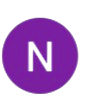SIGNS OF STRUCTURAL DAMAGE CAUSED BY SUBSIDENCE
Structural damage to your home can occur through subsidence when the foundations begin to sink because the earth beneath them has become unstable.
Subsidence is one of the most serious problems a property can suffer. If the foundation can no longer support the weight of your house, it threatens the structural integrity of the building and can slash its resale value.
Spotting signs of damage due to subsidence during the early stages gives you the opportunity to take measures to halt further structural deterioration and prevent similar problems in the future.
You shouldn’t necessarily assume the worst, though. For instance, surface cracks are far more likely to be the result of natural swelling and shrinkage because of humidity and temperature fluctuations. Freshly-plastered walls and ceilings can also develop small cracks as the plaster dries.
Types of cracks that point towards structural damage include those that are:
- Near windows or doors.
- Visible outside and inside.
- Below the damp-proof course.
- Where an extension joins the house.
- In your basement.
- In exterior brickwork.
- In a chimney.
Other signs of subsidence-related structural damage include:
- Bowed walls.
- Gaps between walls and floors.
- Nails popping out.
- Wallpaper wrinkling near the ceiling.
- Windows and doors sticking (the frames may be warping).
- Uneven floors.
- Front porch pulling away.
- Gaps in the exterior of window and door frames.
Getting an Expert Opinion
Unless you’re a structural engineer, the only way to determine whether subsidence is damaging your home is to consult a specialist in foundation and subsidence inspections.
You’ll find that a good underpinning contractor in Melbourne will carry out a free assessment of your property and advise you on any necessary steps to halt progression of structural damage and/or safeguard against problems further down the road.






